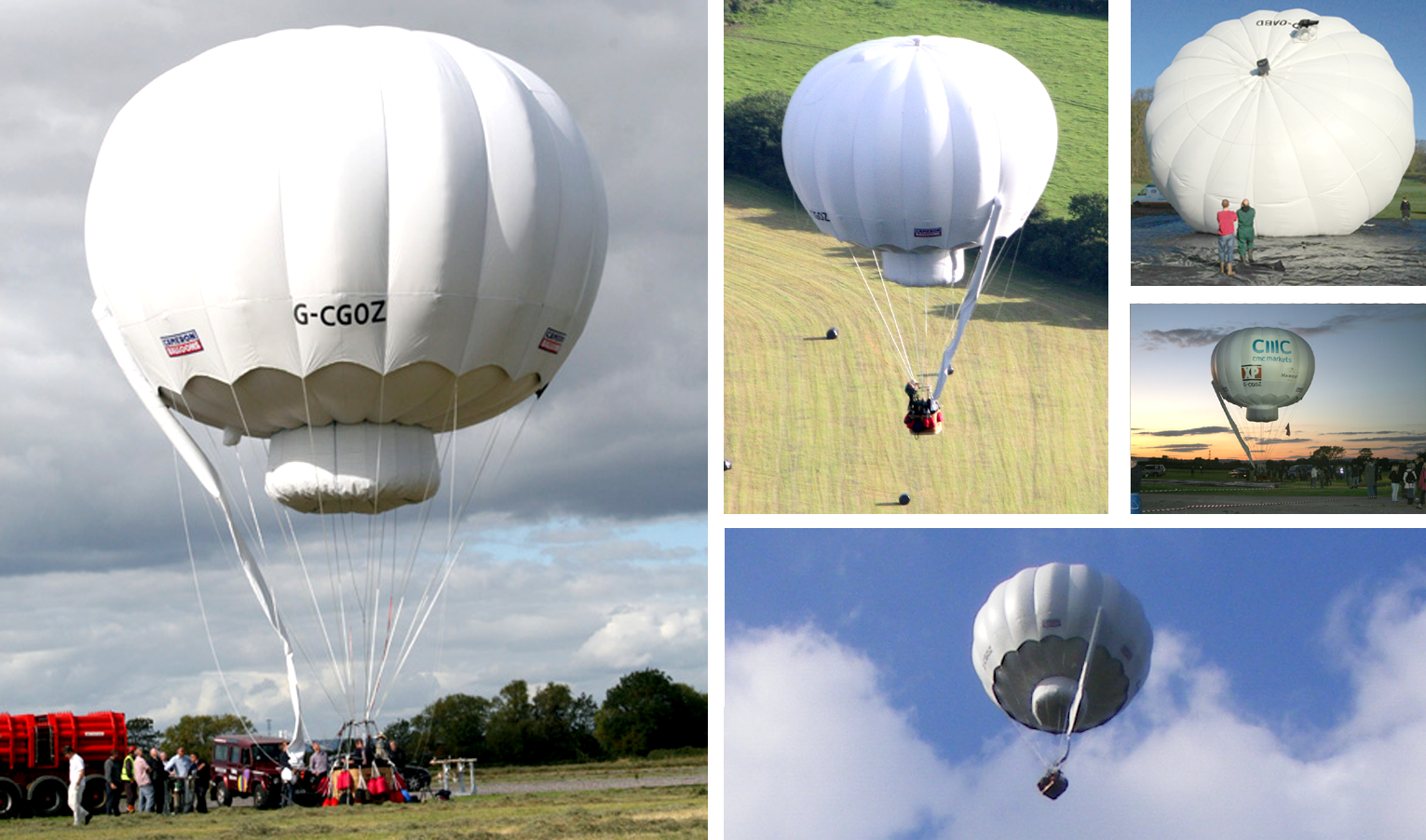

No-one should ever build a gas balloon in the traditional way again!
This latest generation of Gas balloons made it's first flight in Sept 2010. The Cameron GB1000 flew in the Gordon Bennett Race a few days later, successfully landing after 82hrs simply due to poor weather conditions; however this balloon had enough duration to fly for a further 24hrs. The ground-breaking yet simple design sets a new standard for safety and performance.
In 2018, Mateusz Rekas & Jacek Bogdanski from Poland won the 62nd Gordon Bennett Race flying their GB1000 Gas Balloon. With a flight endurance of 58 hours 25 minutes, they are the first Polish winners for 35 years.

The GB1000 envelope is a totally sealed system, so the hydrogen remains pure and does not come into contact with air at any time during the flight. By prohibiting gas and air mixing, combustion is prevented, even if a spark should occur. The GB1000, like all hydrogen balloons today, is constructed from conductive fabric to prevent the occurrence of sparks and care must be taken that all ropes, webbings and accessories are also conductive.
...it’s really a wonderful balloon, there are so many advantages, first of all it's very simple and convenient for preparation & inflation. The Cameron GB1000 maintains altitude very precisely - for 2½ hours I didn't waste a single scoop of ballast.
A completely sealed balloon must have provision for pressure release and this is achieved by the servo system. When the balloon is full, instead of allowing an overflow of gas through a fabric appendix tube at the base, the servo pulls on the valve line allowing hydrogen to exit at the top. The metal gas valve has a chimney extension where ignition, should it occur, would not be a problem. This is the only place where gas and air can mix.
When the balloon is below its ceiling, the servo fabric rises, taking the load off the valve line and ensuring that the valve is closed. The valve control line passes through the servo and down to the basket where the pilot can operate the valve manually at any time.
Final deflation is achieved by a fabric “chimney” type deflation port. At this time hydrogen will come into contact with air, but this will only be on the ground. Danger is minimised by the use of anti-static materials.
Fabric - Built from brilliant white fabric to reduce solar gain and night cooling.
Dimensions: 19.4mtrs tall (from bottom of basket runner to top of valve), 13.3mtrs wide (across envelope equator)
So, whether you are an intrepid pilot, or a sponsor interested in using the memorable publicity that balloons generate, or if you are a wish-list adventurer looking to use our expertise to provide you with a suitable aerostat, we can help.
Speak to our Project Team at sales@cameronballoons.co.uk or telephone: +44 (0)117 963 7216